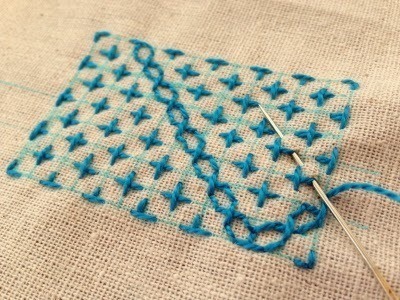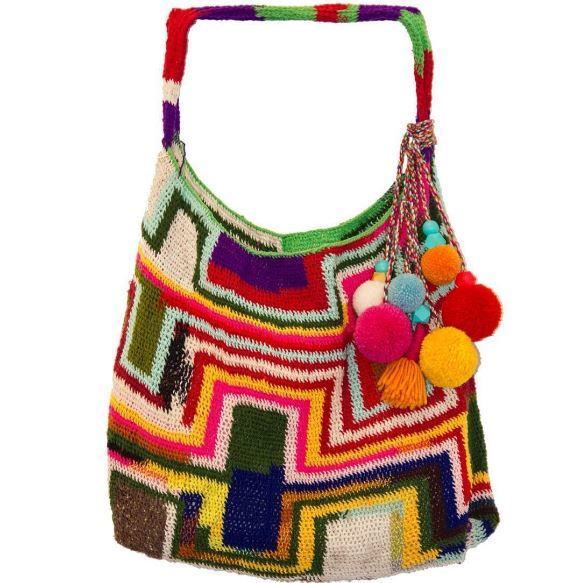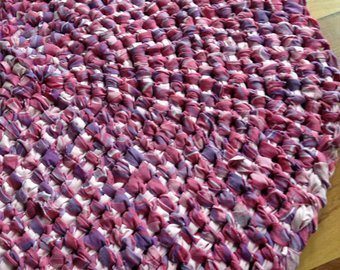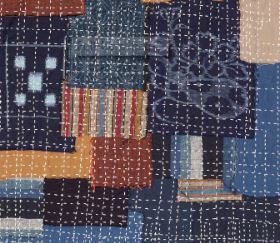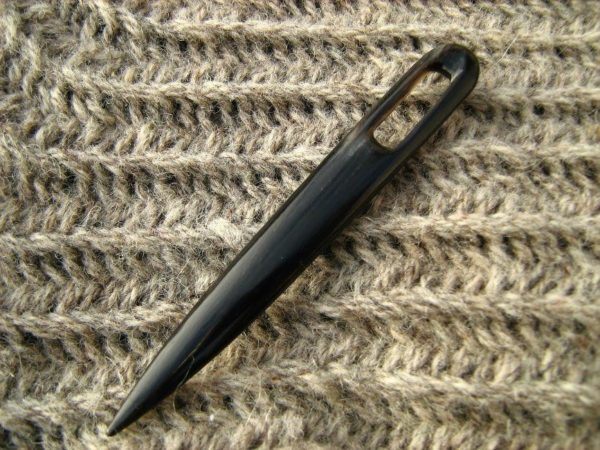How to Make a Rag Rug
The great thing about making a rag rug is that you can create a gorgeous functional handcrafted item that will last many years – and may be a cherished family heirloom – for very little money.
You can use sheets or cotton from clothes that you were going to toss or donate. If you’re looking for certain colors or patterns to incorporate into your rug, you could head out to your favorite fabric store. Or, save money and head to your local thrift store (at my local Goodwill Bin store, I pay for good quality cotton shirts by the pound). Making a rag rug doesn’t require a lot of investment up front – as long as you can get your hands on approximately 10 yards of cotton or cotton blend fabric.
Fabric Prep
Cutting and Tearing
You’ll need to either cut or tear strips of fabric to get started (see How to Make an Amish Rag Rug if you need instructions). If you cut the fabric you’ll have to make sure you’re cutting straight lines, either along the selvedge or against the selvedge.
You don’t want to end up with a higgly-piggly cut or a diagonal cut if you can help it because then you’ll have compromised the strength of your fabric in the first case, and made it too stretchy in the second case.
Unless you want that extra added texture in your rug to pop up now and then, you’ll want to get rid of the selvedge. The selvedges are the long sides of the fabric. You’ll want to make a scissor snip close to one of the selvedges, then grab the 2 parts where the snip’s been made, and just tear. You’ll be tearing with the weave of the cotton, so you’ll get a straight line.
Measure 1 ½ to 2 inches from that tear line, make a scissor snip, and tear. Keep measuring and tearing until you’ve torn the entire piece of fabric into strips.
If you want to try your hand at working with a double-length long strip, then you can do a simple trick at the end of the fabric. Don’t rip all the way – rip to about an inch from the end, and make a snip 1 ½ to 2 inches to start the next width, and rip to the very end. You can see this technique at 3:02 in the video.
Turn Your Long Strips into Skeins
You’ll most likely have random threads that are hanging from the sides of the strips. You’ll want to gently pull them away from your strips. The strips will have these raw edges, but they’re strong, and will be even stronger when they’re turned into looped knots.
Gather your strips into balls, or wrap them into skeins. When you run out of material, you’re going to have to join the next strip or skein by making an Amish Knot, aka Scandinavian Knot. For quick instructions, refer to the first video in our How to Make an Amish Rag Rug post. You'll find instructions at the timestamp 4:00 - 5:25.
If you’d like, you can always join your pieces by stitching them together on a machine, either by overlapping two pieces, or by making a seam. If you’ve got a rotary fabric cutter, see-through ruler, and self-healing cutting mat, you can pretty easily make a continuous piece of sheet yarn using a technique you can see in Erin Halvorsen’s video 'Learn to Cut Sheet Yarn in One Long Strip,' below.
Watch Video Tutorials
In the Amish Toothbrush Rag Rug, Barri-Jayne uses 4 loops to get her round rug going. Here, Anna Dearing uses 21 initial stitches to get her oval rug going.
Barri-Jayne had to add extra loops when her rag rug holes got too big. Anna adds crochet stitches at the ends of her ovals so the rug doesn’t buckle.
When you’re finished, you’ve got something that’ll be warm underfoot in the wintertime, and will be durable. You can throw it in the washer and dryer multiple times, and it’ll just keep its shape.
Erin shows us how to make a beautifully colored crocheted rag rug in her 2-part tutorial:
Part 1: Runner Rag Rug
Part 2: Runner Rag Run
For making different types of rag rugs, read our posts The Lost Art of Braid-in Rag Rugs and How to Make a Toothbrush Amish Rag Rug. You might find our post Crafting Resources helpful - with lists of free resources and How-To's.
Having fun with new and traditional crafts, art, design, DIY, and freebies.
TRENDING & POPULAR
FREE ART BOOKS ONLINE Start your own free collection of art books from three major museums.
DISCOVER SASHIKO STITCHING Learn how to make traditional Japanese decorative stitches for quilting, mending, and upcycling.
BILUM Discover a fabric-making technique used in Papua New Guinea that can be used to make bags and dresses.
HOW TO MAKE AN AMISH RAG RUG There's no sewing required to make this traditional homemade crafted item.
35,000 FREE KNITTING & CROCHETING PATTERNS Use our easily searchable list to find free patterns by Rowan, Vogue, Lion Brand, Berroco, and more.
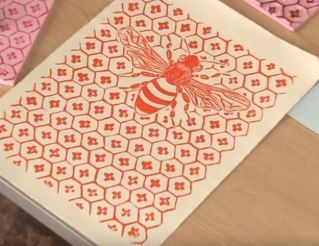
HOW TO MAKE A LINOLEUM BLOCK PRINT Watch how-to videos for beginners explaining the basic step-by-step process of making a linoleum block print.
HOW TO MAKE A BORO BAG Learn how to make a stand-out bag using a Japanese patchwork technique and Sashiko stitching.
'KNIT' LIKE THE VIKINGS Discover an ancient fabric-making technique that's still done today, pre-dates knitting, and doesn't unravel.
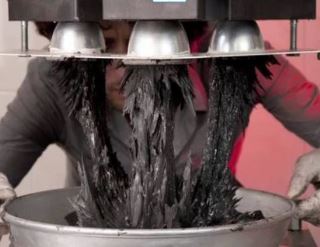
MAGNETIC CLAY CERAMICS Ceramic artists working with magnetic clay can play with the forces of nature to create fantastical structures.




